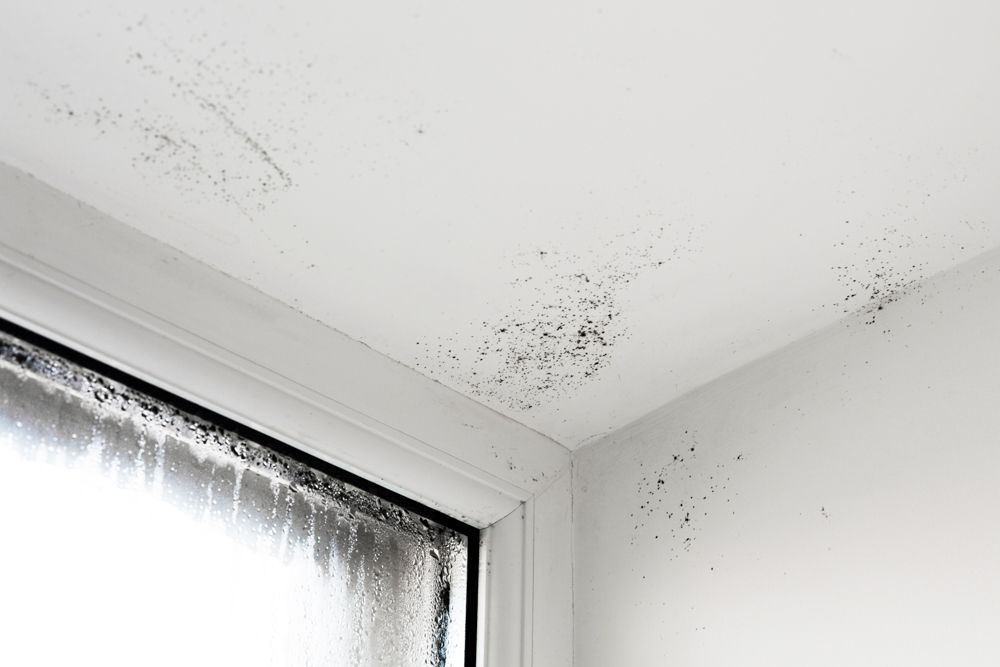Opening Hook:
Last summer in Karachi, Nadia noticed something strange. Every morning, her bedroom walls felt damp—almost as if they were “sweating.” At first, she blamed the rainy season, but soon tiny patches of mold appeared near the corners. She had unknowingly become part of a very common problem in high-humidity areas: wall condensation, often nicknamed “wall sweating.” It may seem harmless at first, but left unchecked, it can damage your home and even affect your health.
1. What Is Wall Sweating and Why Does It Happen?
Wall sweating occurs when warm, moist air comes into contact with a cooler wall surface, causing water droplets to form. Think of it like a cold soda can on a hot day—the outside of the can collects moisture from the air.

For instance, in coastal cities like Karachi or Gwadar, the air is often heavy with moisture. When that humid air hits the cool cement or tiled walls, condensation forms. This is more than just a cosmetic issue—it can lead to mold, mildew, peeling paint, and even weakened wall structures over time.
Read More: How to Make a Low-Ceiling Basement Feel Taller
2. The Hidden Dangers of Wall Condensation
Many homeowners dismiss wall sweating as a seasonal inconvenience. But in reality, it can have long-term consequences:
- Mold growth: Mold thrives in damp, poorly ventilated areas. Exposure can cause allergies, asthma flare-ups, and respiratory issues.
- Structural damage: Over time, moisture can weaken plaster, loosen wallpaper, and even cause cracks.
- Electrical hazards: In severe cases, water can seep into electrical outlets, creating a safety risk.
As a result, tackling wall sweating early isn’t just about keeping your home looking fresh—it’s about protecting your health and investment.
Read More: How to Hire a Certified Basement Contractor in UAE
3. Improving Ventilation: The First Line of Defense
Ventilation is one of the simplest yet most effective ways to reduce humidity and prevent wall sweating.
- Open windows regularly to allow fresh air circulation—especially in kitchens and bathrooms.
- Install exhaust fans in moisture-prone areas to expel humid air.
- Consider cross-ventilation: Open windows or vents on opposite sides of the room to create airflow.
For example, Saad from Lahore installed a small exhaust fan in his basement laundry area. Within weeks, the musty smell vanished, and the wall condensation reduced significantly.
Read More: Installing a Backwater Valve in UAE Homes – Protecting Your Basement and Peace of Mind
4. Use a Dehumidifier to Control Indoor Moisture
If natural ventilation isn’t enough—especially in humid climates—a dehumidifier can be a game-changer.
A dehumidifier works by drawing in humid air, removing the moisture, and releasing dry air back into the room.
Furthermore, modern models come with humidity control settings, allowing you to keep indoor humidity below 50%, the sweet spot where mold and mildew struggle to grow.
Read More: Hosting Game Nights in Your Basement Lounge: Turning Ordinary Evenings into Unforgettable Memories
5. Increase Wall Temperature to Reduce Condensation
Condensation happens when warm, moist air hits a cold surface. By increasing the surface temperature of your walls, you can make condensation less likely.
- Insulate your walls: Insulation creates a barrier that keeps walls warmer in winter and cooler in summer.
- Use thermal wallpaper or insulated panels: These add a protective layer to cold walls.
In contrast, leaving walls bare in high-humidity areas can make them more prone to dampness.
Read More: Best Air Quality Monitors for Basement Use
6. Address the Source of Moisture
Sometimes, wall sweating is a symptom of a bigger problem—water seepage or leaks.
- Check for roof leaks, especially after heavy rain.
- Inspect plumbing pipes for drips or slow leaks.
- Seal cracks in exterior walls to prevent rainwater from entering.
For instance, a family in Multan thought their damp living room wall was caused by humidity, but it turned out to be a leaky pipe inside the wall. Fixing the pipe solved the problem permanently.
Read More: Budget Interior Ideas for Pakistani Basements
7. Choosing the Right Paint and Coatings
Certain paints can make a big difference in how walls handle moisture.
- Moisture-resistant paints: These are specially formulated to repel water and prevent mold growth.
- Anti-condensation paints: These paints contain insulating properties that help keep the wall surface warmer.
As a result, not only will your walls look better, but they’ll also be more resistant to future sweating.
Read More: Basement Office Ideas – 11 Stylish Work From Home Spaces
8. Rethink Furniture Placement
Furniture placed directly against an exterior wall can trap moisture and prevent airflow, creating the perfect environment for condensation.
- Leave at least a few inches of space between furniture and walls.
- Use shelving or open-backed furniture to allow air circulation.
For example, when Mariam moved her large wardrobe two inches away from her bedroom wall, the musty smell behind it disappeared within a month.
Read More: Construction Material Choices for Basements in Pakistan
9. Seasonal Maintenance and Cleaning
High-humidity areas often have seasonal spikes in wall sweating—like during monsoon season or cold winter mornings.

- Wipe down damp walls regularly to prevent mold.
- Clean with a mild vinegar solution to kill mold spores naturally.
- Monitor humidity levels with a hygrometer.
Furthermore, making wall inspections part of your seasonal home maintenance can help catch problems early.
Read More: Signs of Toxic Mold in Basement Walls: What Every Homeowner Should Know
10. When to Call a Professional
If you’ve tried improving ventilation, reducing humidity, and using special paints but the problem persists, it’s time to bring in an expert.
Professionals can:
- Identify hidden water leaks.
- Install advanced moisture control systems.
- Apply industrial-grade sealants or insulation.
In contrast to DIY fixes, professional solutions can be more costly upfront but often save you from major repairs later.
Story Wrap-Up
Back in Karachi, Nadia decided to tackle her wall-sweating problem head-on. She installed an exhaust fan in her bedroom, bought a compact dehumidifier, and repainted her walls with moisture-resistant paint. Within weeks, the dampness was gone, the mold patches stopped spreading, and her room felt fresher. The bonus? She noticed her seasonal allergies improved, too.
Key Takeaways
- Wall sweating is common in high-humidity areas but can lead to serious issues if ignored.
- Improve ventilation and use dehumidifiers to control moisture levels.
- Warm up wall surfaces with insulation or anti-condensation coatings.
- Address the root cause by checking for leaks and sealing cracks.
- Maintain and monitor your home seasonally to stay ahead of humidity issues.
Read More: Prayer Room + Reading Nook Hybrid Ideas Blending Tranquility and Inspiration at Home
Final Thought:
Your home should be your safe, comfortable space—not a breeding ground for mold and dampness. By understanding why wall sweating happens and taking simple, proactive steps, you can protect your walls, your health, and your peace of mind. After all, the best time to fight moisture damage is before it starts.
🏗️ Basement Project Calculator
Latest Post
-
Basement Ceiling Ideas Hide Ductwork Smartly
Opening Hook Imagine walking into your basement in Boise, Idaho—where the ceiling is so low that you brush your head on the joists—and noticing a sleek, well-designed backdrop above you instead of exposed ductwork and pipes. That difference, thanks to smart basement ceiling ideas, transforms a cramped, unfinished area into a welcoming space for movie…
-
أفكار رائعة لأرضيات رخيصة في دبي | أفضل ٢٠ خيارًا
تخيل زوجين شابين في شقة مريحة في مرسى دبي، يخطوان حافيي القدمين على أرضية أنيقة بلمسة خشبية. غرفة المعيشة تتلألأ بضوء مسائي خافت، والأرضية تحتها لا تزال تبدو جديدة تمامًا رغم سنوات من الاستخدام – وكل هذا بميزانية محدودة. هذه هي قوة اختيار أرضيات جميلة ورخيصة في دبي: الأناقة والتوفير في آن واحد. التركيز على…
-
Beautiful Cheap Flooring Ideas in Dubai | Top 20 Picks
Imagine a young couple in a cosy apartment in Dubai Marina, stepping barefoot onto a sleek, wood-look floor. The living room glows with soft evening light, the flooring beneath still looks brand-new despite years of use—and all this on a budget. That’s the power of choosing beautiful, cheap flooring in Dubai: style and savings in…



